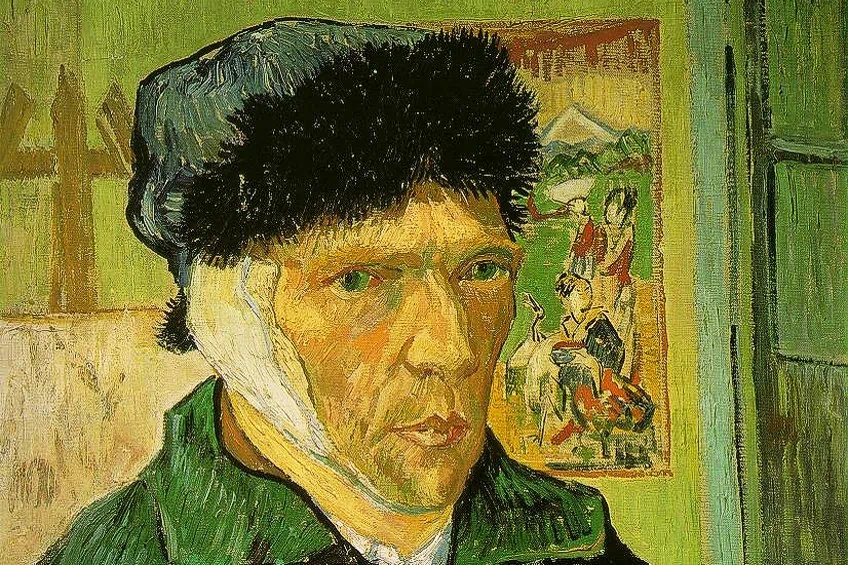Famous Self-Portraits – Discover Famous Portrait Paintings in Art
Since 2016, you may have jumped on the bandwagon of the selfie trend, and you may have not gotten off. The idea of capturing the self has been practiced for centuries and is a rite of passage for many artists- even the great masters. Self-portrait art is defined as an act of documenting the physical facial appearance of oneself through painting, drawing, photography, or sculpture. This article will introduce you to some of the most famous self-portraiture artists of the Renaissance art scene. We will also look at a few contemporary self-portraiture artists to give us insight into the common patterns of documenting the self.
The Art of Self-Portraiture
Self-portraiture first emerged as an act of documenting the self and over time, it progressed into a common activity that can be practiced by anyone who owns a smartphone or camera. The self-portrait referenced in this article speaks about the self-portrait through the lens of art and not as a mere form of identification.
Famous Self-Portrait Artists
Below, you will find a list of the most famous self-portraiture artists who have incorporated portraiture since the beginning of their artistic careers. The human form is known to be the most accessible and well-known subject to work from. What is better than starting with your reflection?
Leonardo da Vinci (1452 – 1519)
Leonardo da Vinci’s Portrait of a Man in Red Chalk (c.1512) is one of the most famous artist self-portraits, also known for being a debated portrait of the famous Italian polymath. It is believed that Da Vinci created this self-portrait when he was 60 years old and is now housed at the Royal Library of Turin in Italy.
The self-portrait is drawn in red chalk and over time gained exposure to moisture, which left the drawing in a poor, fragile condition.
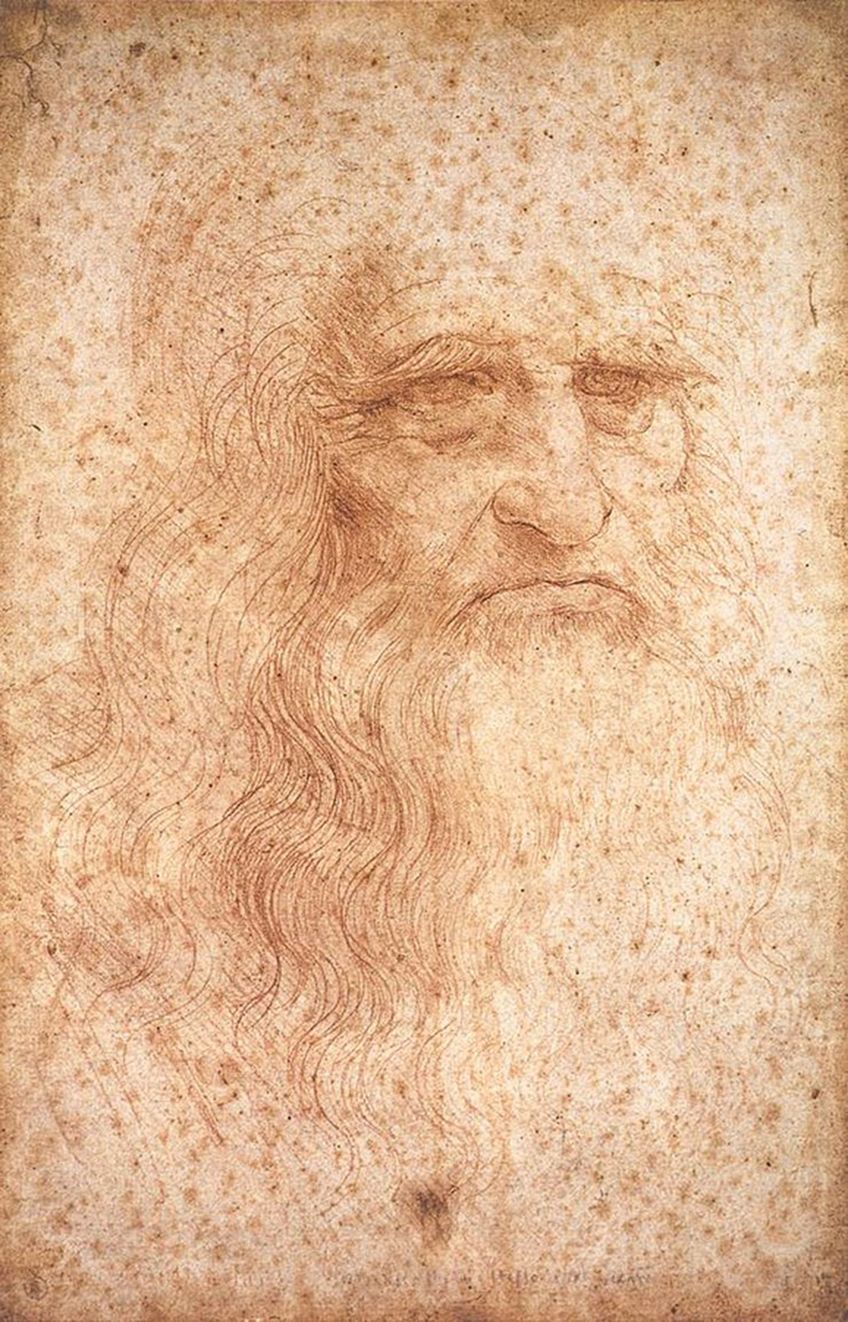
On the drawing, there is a text that mentions Da Vinci’s name, although, it is believed to have been written by someone other than the artist at a much later stage. Other critics suggest that the man in the portrait is not Da Vinci himself, but could be his uncle or late father. This self-portrait is one of the treasures of Italy simply because of the artist it is presumed to represent. Leonardo da Vinci was a great master of the high Renaissance who accumulated many artistic achievements.
He is most famous for painting the Mona Lisa (1503), The Last Supper (c.1495 – 1498), and the Vitruvian Man (1490).
Albrecht Dürer (1471 – 1528)
Who was the first recognized self-portraiture artist? It was the highly esteemed and self-conscious, Albrecht Dürer. Dürer is considered one of the first famous self-portrait artists who produced the most self-portraits and eventually earned himself a place as one of the first artists of the Renaissance who used self-portraiture as the primary subject of painting.
The artist is said to have made at least 12 self-portraits with the earliest self-portrait first made when the artist was around 13 years of age.
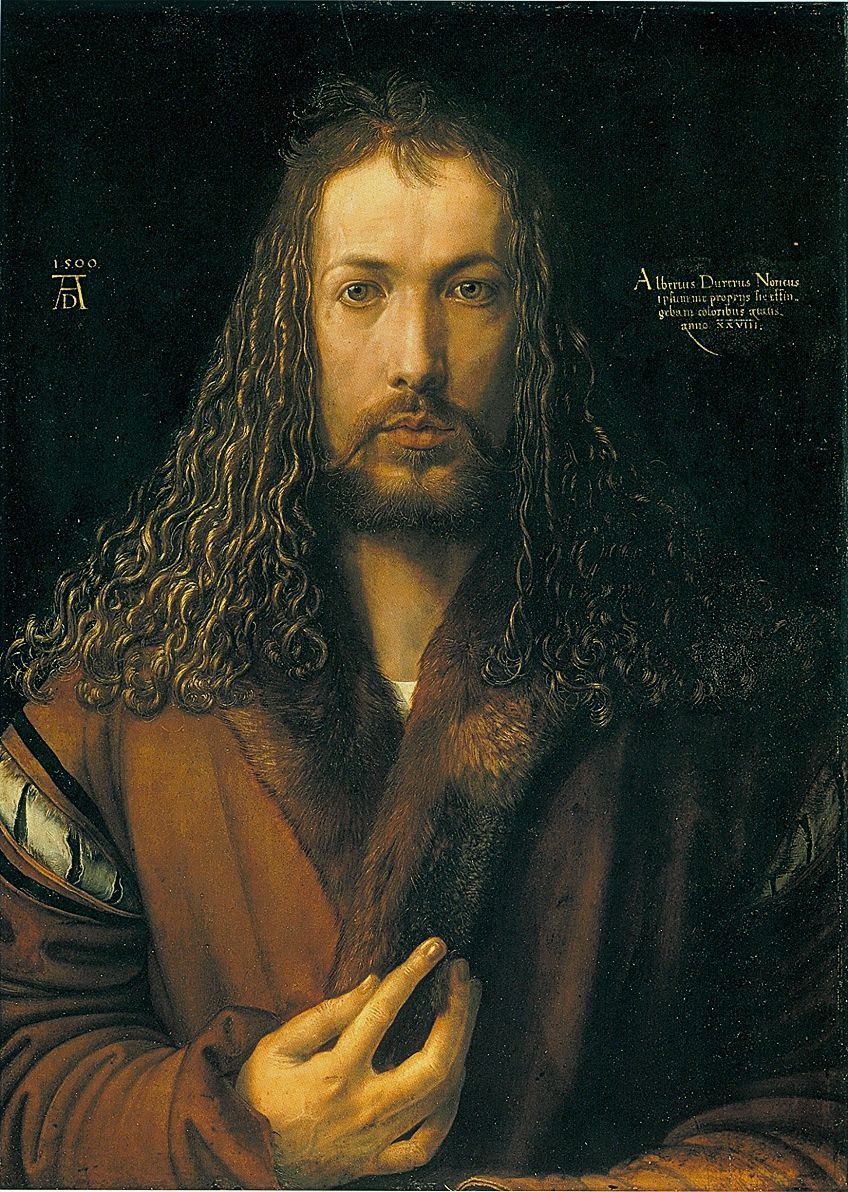
Albrecht Dürer often depicted many versions of himself and even portrayed himself in one portrait as bearing a close resemblance to Jesus Christ. He also created many nude self-portraits, reiterating his endearment for the genre of self-portraiture.
Some might have even claimed that Dürer was a narcissist. What do you think?
Rembrandt van Rijn (1606 – 1669)
The turn of the 17th century marked the rise in self-portrait art as many artists began to adopt themselves as their own subjects. As one of the most famous self-portrait artists, Rembrandt holds a massive portfolio of over 90 self-portraits and is most famous for being one of the best painters of the Dutch golden age.
Rembrandt was not only a man who created many famous portrait paintings, but he was also an art dealer and collector.
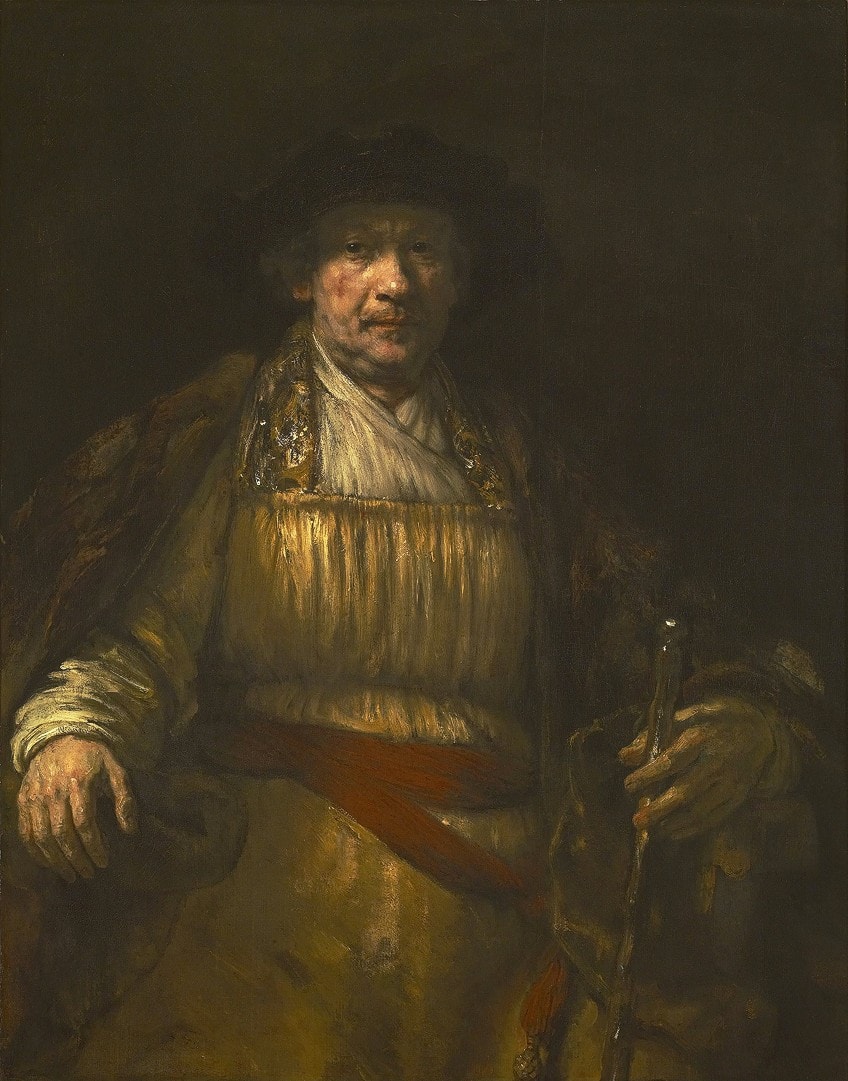
His rise to fame can be attributed to his masterful display of skill in his self-portraits. In addition to a massive portraiture portfolio of himself, his children, and his wife, Rembrandt even incorporated his self-portraits in his classes, making use of self-portraiture as a learning tool for his scholars.
His choice of medium was predominantly oil painting and etching.
Gustave Courbet (1819 – 1877)
French artist and leader of the 19th-century Realism movement, Jean Gustave Courbet is renowned for his creative approach to self-portrait art. An active socialist, Courbet is considered to have produced one of the largest self-portraits in the world.
This is seen in his works, Bonjour, Monsieur Courbet (1854), and The Artist’s Studio: A real allegory summing up seven years of my artistic and moral life (1855).
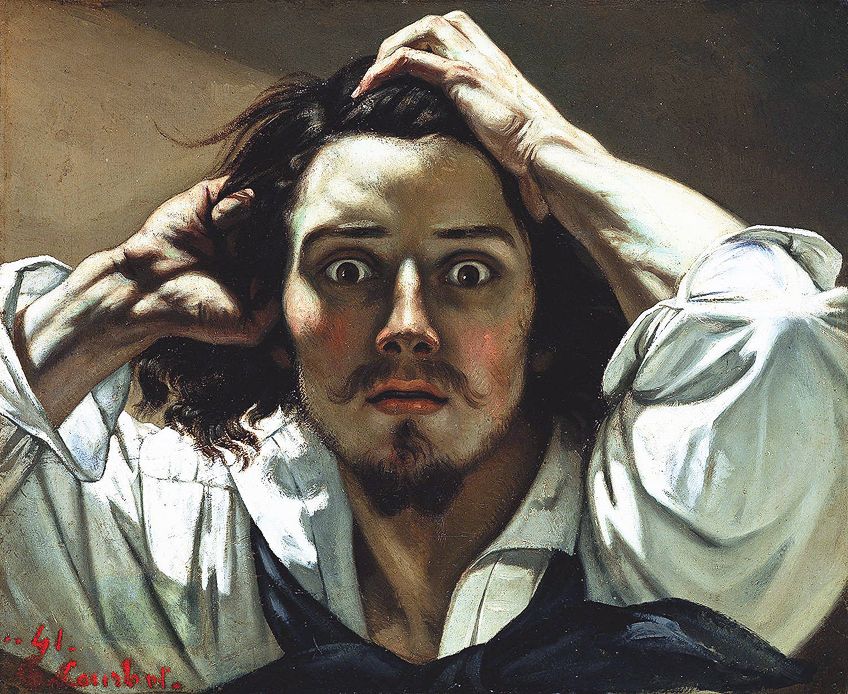
The latter painting was acknowledged by all, including art critic Charles Baudelaire as a masterpiece. Gustave Courbet was also admired by artists of the avant-garde, including many impressionist painters such as the notable Édouard Manet.
The Artist’s Studio: A real allegory summing up seven years of my artistic and moral life can now be seen at the Louvre in Paris.
Frida Kahlo (1907 – 1954)
How can we talk about self-portrait artists without talking about the queen of self-portraiture, Frida Kahlo? Loved by the world, Frida Kahlo’s famous portrait paintings are predominantly made up of self-portraits, amounting to an estimated 55 self-portraits out of over 200 paintings depicting her interest in her everyday life.
Many of her self-portraits give us a glimpse into her personal life and the emotional and physical pain she experienced.
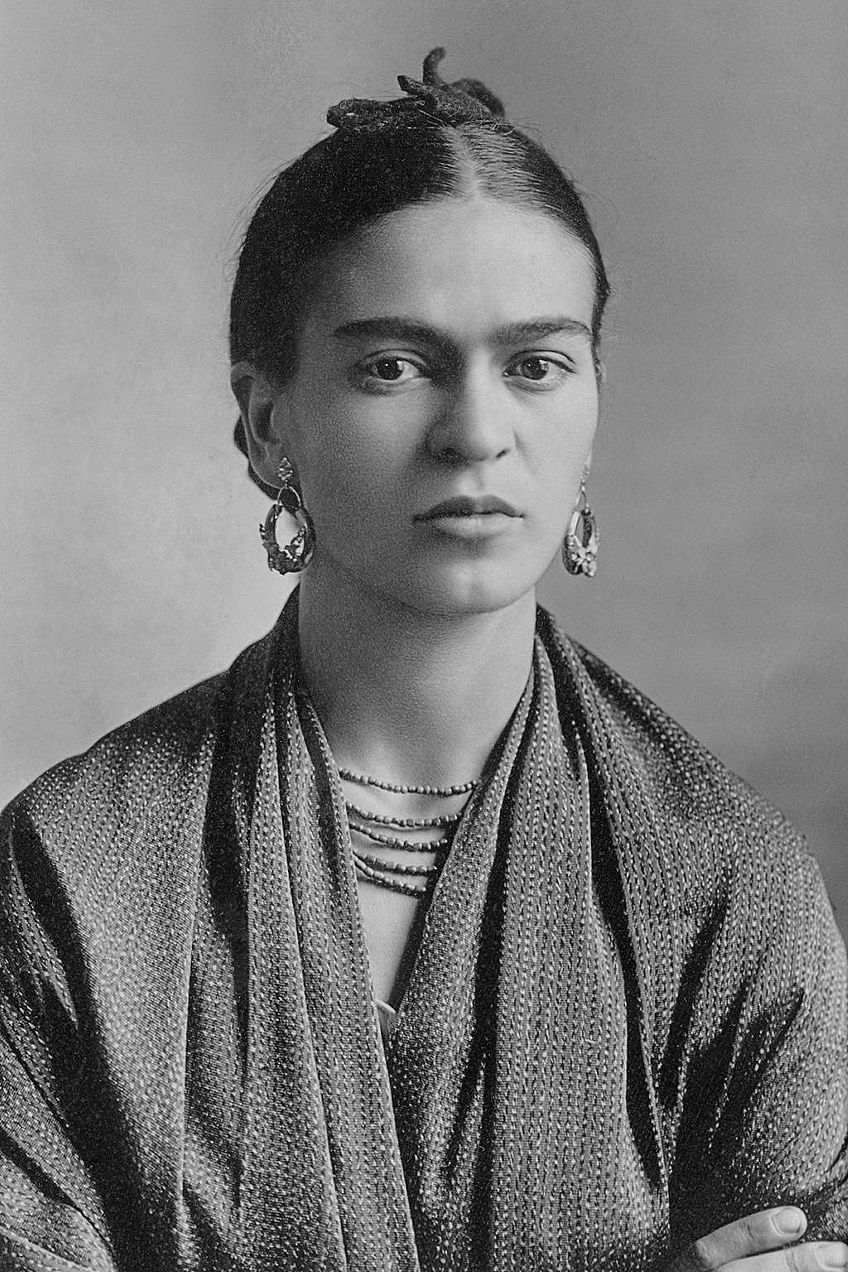 Photograph of artist Frida Kahlo, taken on the 16 October 1932; Guillermo Kahlo, Public domain, via Wikimedia Commons
Photograph of artist Frida Kahlo, taken on the 16 October 1932; Guillermo Kahlo, Public domain, via Wikimedia Commons
Kahlo was subject to a terrible tragedy that eventually left her bedridden. As she took to painting, many famous works emerged, and her self-portraits became a source of great symbolism. Her involvement with contemporary Diego Riviera also added to her emotional pain. Her self-portraits are defined by her unique style and look, characterized by her unibrow, bright red lips, intense symbolic imagery, her hair, and her classic unbothered gaze.
The Mexican artist is still celebrated for her passion and bold display of color in the depiction of Mexican culture. Throughout her life, the artist had endured more than 30 surgeries and is a great role model to many artists.
Famous Self-Portrait Artworks
Now that you have caught a glimpse of some of art history’s best self-portrait artists, it is time to look at some of the world’s most famous self-portrait art. Below are a few self-portraits that have captured the attention of the global art community.
Portrait of a Man (1433) by Jan van Eyck
| Artist | Jan van Eyck |
| Date | 1433 |
| Medium | Oil on panel |
| Dimensions (cm) | 25.9 x 33.1 |
| Where It Is Housed | National Gallery, London |
Commonly identified as the portrait of a man with a red turban on his head, this 1433 painting by Jan van Eyck is a very famous artist self-portrait of the Flemish artist. As a pioneer of Netherlandish painting and a master of northern Renaissance painting, Van Eyck is considered in high regard for his contributions to Ghent Altarpiece (c. 1420 – 1432) and The Arnolfini Portrait (1434).
The inscription on Portrait of a Man reads Als Ich Can and is known to be Van Eyck’s autograph. The painting has been housed at the National Gallery in London since 1851.
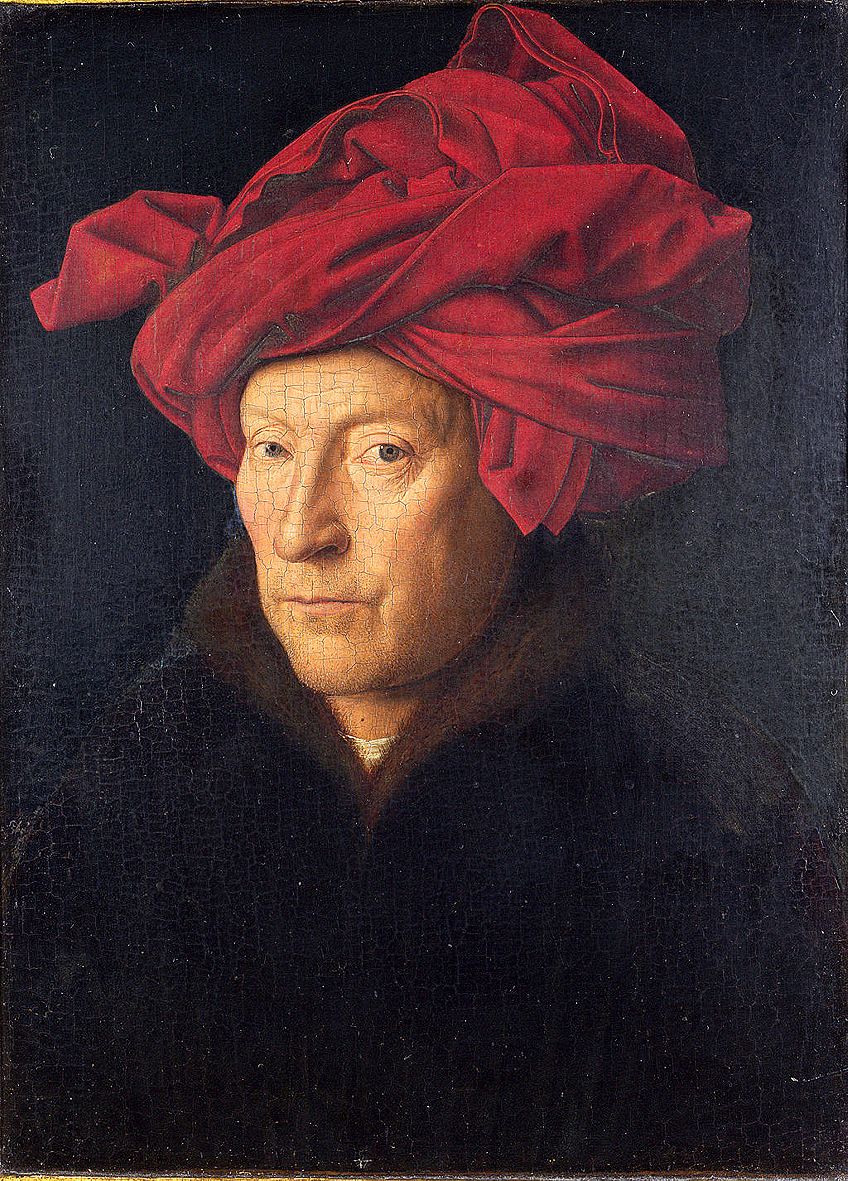 Portrait of a Man (Portrait of a Man in a Red Turban) (1433) by Jan van Eyck, located in the National Gallery in London, United Kingdom; Jan van Eyck, Public domain, via Wikimedia Commons
Portrait of a Man (Portrait of a Man in a Red Turban) (1433) by Jan van Eyck, located in the National Gallery in London, United Kingdom; Jan van Eyck, Public domain, via Wikimedia Commons
Self-Portrait with Beret and Turned-Up Collar (1659) by Rembrandt
| Artist | Rembrandt van Rijn |
| Date | 1659 |
| Medium | Oil on canvas |
| Dimensions (cm) | 66 x 84.5 |
| Where It Is Housed | National Gallery of Art, Washington D.C. |
Described as a “ruthless” self-portrait, Rembrandt did not spare himself when executing this self-portrait. Self-Portrait with Beret and Turned-Up Collar is known as one of the artist’s best works to date, simply due to his technical skill.
The artist’s self-portrait was painted when he was 50 years of age – a mature, respectable rendition without a thought for smoothing out any imperfections, which Rembrandt had excelled in.
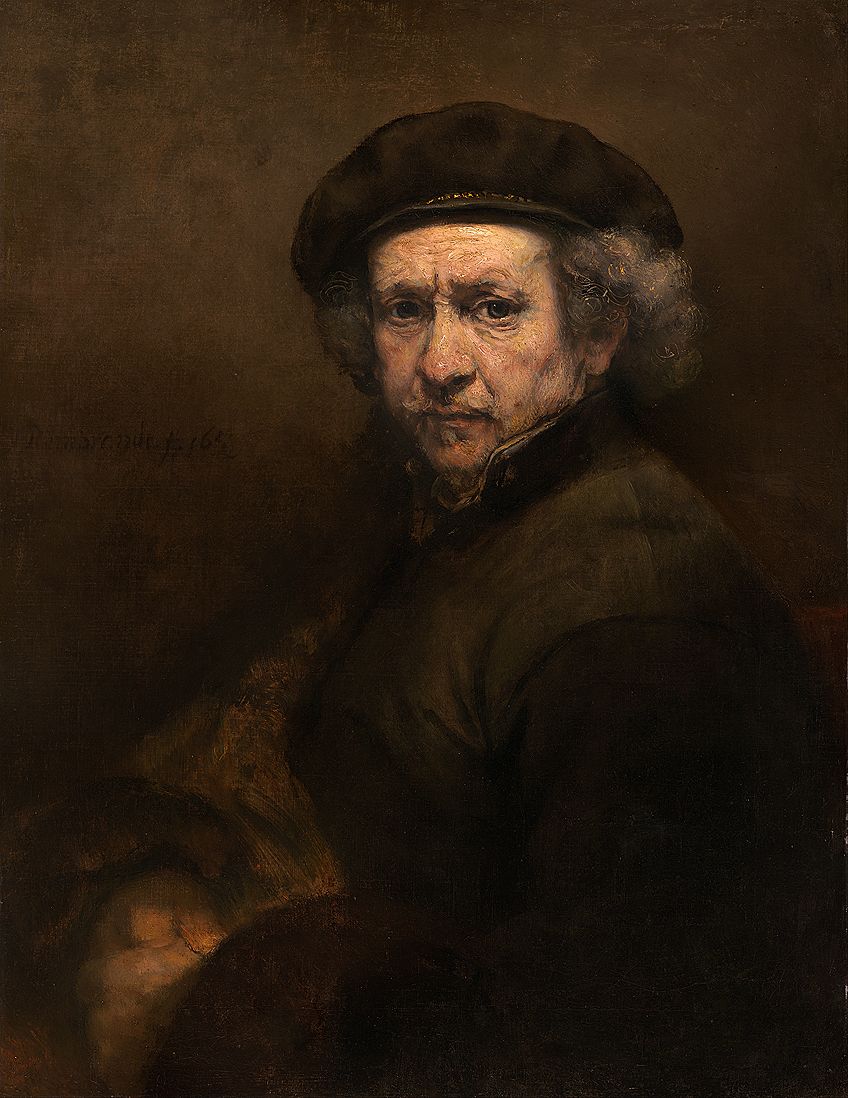
Self-Portrait (1770 – 1775) by Angelica Kauffman
| Artist | Angelica Kauffman |
| Date | c. 1770 – 1775 |
| Medium | Oil on canvas |
| Dimensions (cm) | 74 x 61 |
| Where It Is Housed | National Portrait Gallery, London |
A notable woman of art who preferred to be recognized as an artist first and a woman second, Angelica Kauffman was also the co-founder of the Royal Academy in London. As an independent woman, she chose to become an artist and excelled in her skill as a successful Swiss Neoclassical painter in Rome and London.
Her self-portrait reflects her career as she is seen holding her portfolio and a crayon.
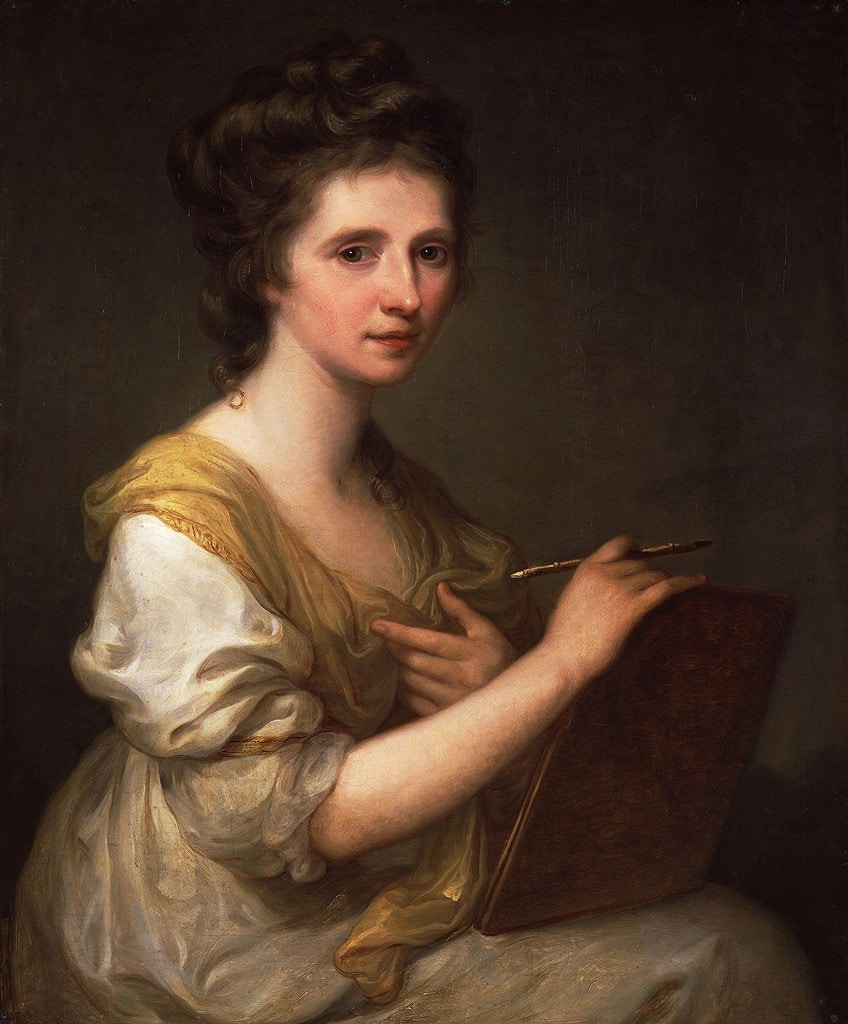
One of the primary reasons she painted herself in this way is because she wished to avoid being categorized as a lady of fashion and part of society. She preferred to be viewed through the lens of her achievements, as did many male artists. Her self-portrait serves as a tool, which allows her to represent her legacy in the way she deemed fit.
The painting placed her career at the forefront so that the viewer has no choice but to witness her greatest pride and joy of being an artist.
Self-Portrait in a Straw Hat (1782) by Élisabeth Louise Vigée Le Brun
| Artist | Élisabeth Vigée Le Brun |
| Date | c. 1782 |
| Medium | Oil on canvas |
| Dimensions (cm) | 97.8 x 70.5 |
| Where It Is Housed | National Gallery, London |
Madame Vigée Le Brun was one of the most famous female artists of the 18th century. She specialized in the portraiture of women and even painted the portraits of Marie Antoinette. Depicted in her self-portrait is the artist holding her palette and positioned in a charming pose.
Her self-portrait gives us a sense of pride and satisfaction in her work as an artist and a pioneer of the “fashionable 18th-century woman”.
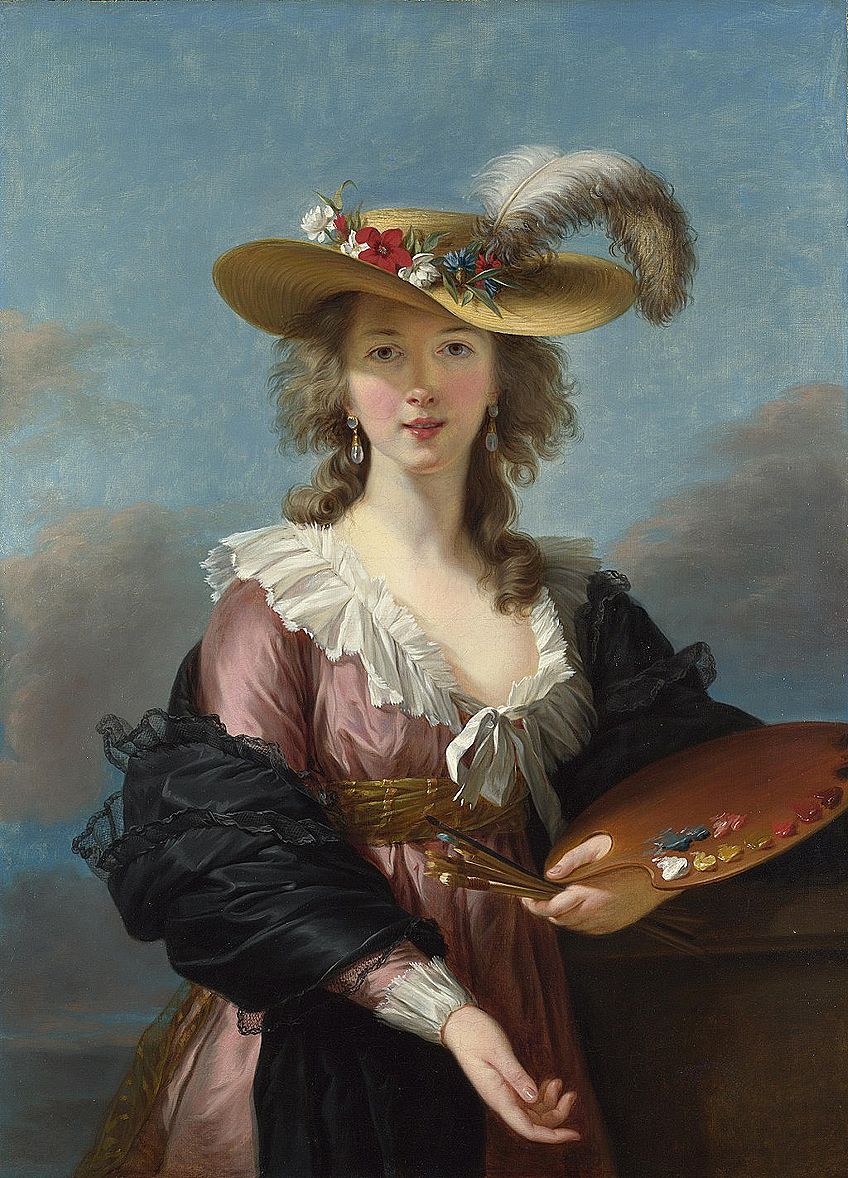
With a portrait portfolio of around 660 paintings, she left behind her own legacy as a master of portraiture. Her works are featured in many major museums across the world, including the National Gallery, the Hermitage Museum, and the New York Metropolitan Museum of Art.
Self-Portrait with Bandaged Ear (1889) by Vincent van Gogh
| Artist | Vincent van Gogh |
| Date | 01 January 1889 |
| Medium | Oil on canvas |
| Dimensions (cm) | 60 x 49 |
| Where It Is Housed | Courtauld Gallery |
Perhaps one of the greatest artists in the world, Vincent van Gogh was not only the master of Impressionism and Post-Impressionism, but he was also the mastermind behind one of the most recognizable self-portraits. Captured in oil, the self-portrait above depicts the talented artist just after he severed his own ear off. His ear is seen bandaged, and his face shows his forward-facing gaze.
His bandage is wrapped around his chin and the iconic green coat and fur cap are also what make this one of the most recognizable Van Gogh works.
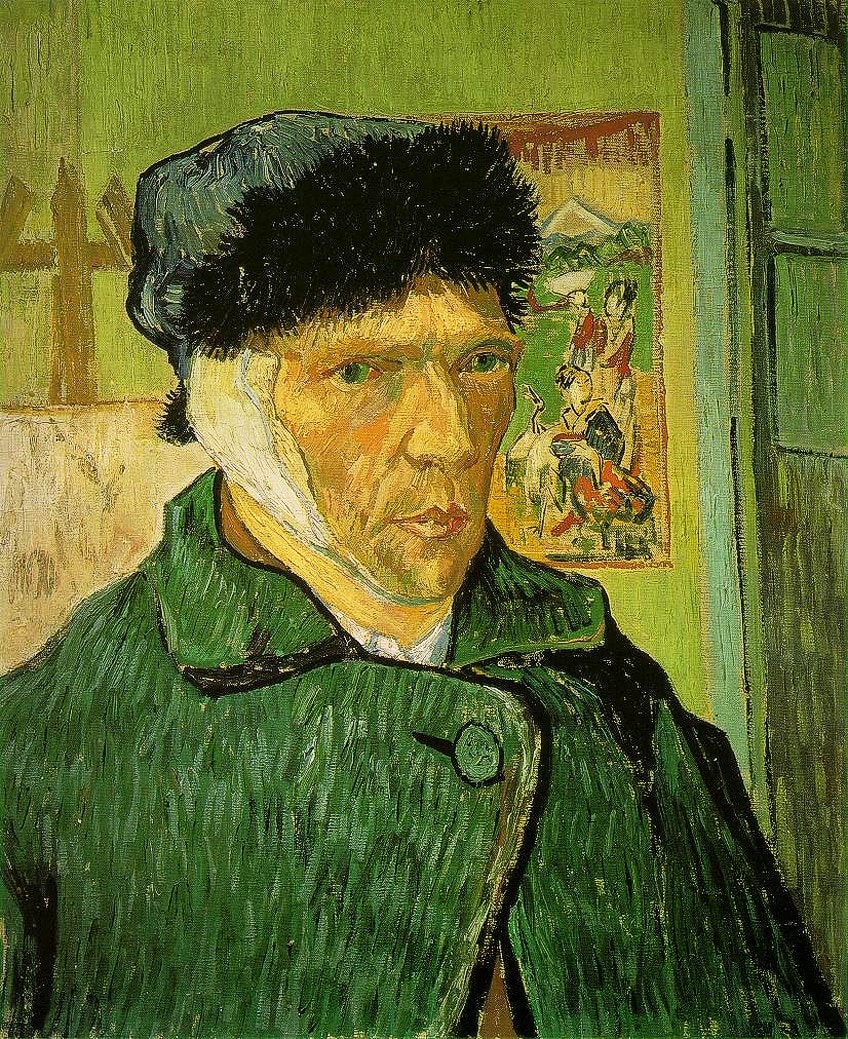
Van Gogh created this self-portrait using a mirror and makes use of the impasto technique, displayed in his vertical brush strokes. The artist also suffered from acute paranoia, which worsened his downward spiral into depression, anxiety, and suicide. Another famous self-portrait is Self Portrait with Bandaged Ear and Pipe (1853 – 1890), which may be the initial reference for Self-Portrait with Bandaged Ear.
The self-portrait can now be viewed at Courtauld Gallery in London.
Self-Portrait with Skeleton Arm (1895) by Edvard Munch
| Artist | Edvard Munch |
| Date | 1895 |
| Medium | Lithograph |
| Dimensions (cm) | 31.9 x 45.8 |
| Where It Is Housed | National Gallery Prague |
Housed at the British Museum, Self-Portrait with Skeleton Arm is an iconic lithograph of the Norwegian artist, Edvard Munch. Executed in 1895, the drawing was reproduced several times since its creation and later versions of the lithograph negate the skeleton arm and the artist’s signature. The black and white self-portrait shows the artist as if he were in a monologue, placing himself in a solitary spotlight, surrounded by darkness.
A very somber self-portrait but famous nonetheless through association with Munch’s reputation as one of the pioneers of Expressionism.
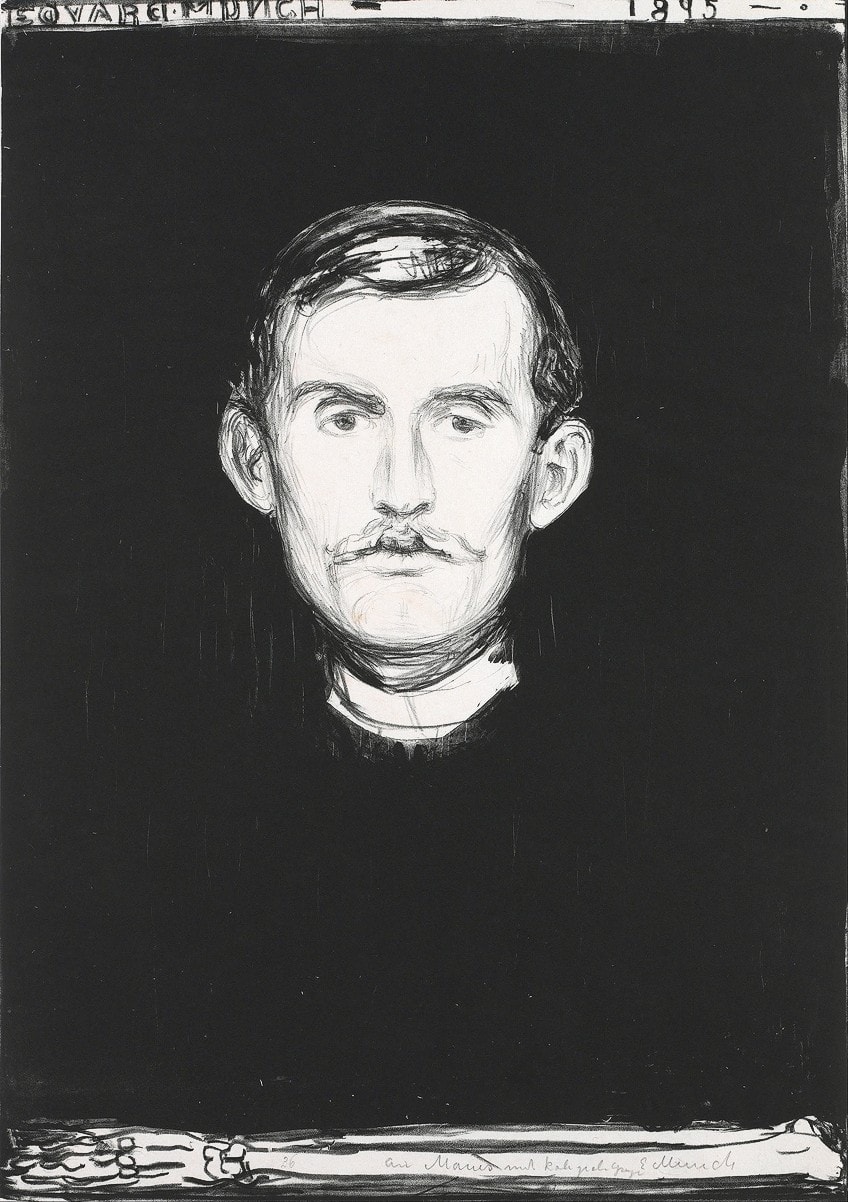
Self-Portrait (1907) by Pablo Picasso
| Artist | Pablo Picasso |
| Date | 1907 |
| Medium | Oil on canvas |
| Dimensions (cm) | 50 x 46 |
| Where It Is Housed | Trade Fair Palace |
Almost immediately recognizable through style alone, Pablo Picasso was famous for his use of bold, sharp geometric lines, a characteristic of his preference for Cubism. This self-portrait by Picasso is one of the most widely circulated images of the artist, defined by his depiction of himself with eyes wide open in a direct confrontation with the viewer. The exaggerated nose, eyebrows, and eyes of the artist are derived from his previous source of inspiration, taken from Primitivism.
This self-portrait painting is a direct example of the artist’s transition to Cubism and is currently located at Narodni Gallery in Prague.
Self-Portrait in the Green Bugatti (1929) by Tamara de Lempicka
| Artist | Tamara de Lempicka |
| Date | 1929 |
| Medium | Oil on canvas |
| Dimensions (cm) | 35 x 26.6 |
| Where It Is Housed | Private collection, Switzerland |
Commissioned by a German magazine in 1929, Polish artist Tamara de Lempicka created a self-portrait aimed at the celebration of female independence. This is one of the most popular female self-portraits, most striking for its stunning portrayal of the female gaze as she sits in a green Bugatti.
The iconic self-portrait serves as a portrait of power and independence, as well as turning the artist into the personification of inaccessibility, beauty, and wealth.
The classic Art Deco and Avant-garde influence is evident in the chic nature of Self-Portrait in the Green Bugatti. This is further heightened by Tamara who wears a gray scarf and leather helmet as she steers the car as if making a pit-stop at the viewer.
Self-Portrait with Horn (c. 1938 – 1940) by Max Beckmann
| Artist | Max Beckmann |
| Date | c. 1938 – 1940 |
| Medium | Oil on canvas |
| Dimensions (cm) | 101 x 110 |
| Where It Is Housed | Private collection |
Expressionist artist, Max Beckmann painted this self-portrait shortly after he took refuge in Amsterdam with his family from Nazi Germany. The self-portrait focuses more on the German artist’s head, hands, and the musical instrument he holds. This suggests that the self-portrait served as a representation of the artist’s intellect while his glance and the shadow cast over his eyes suggest that he was experiencing “dark thoughts”.
In the self-portrait, he holds a German hunting horn called a Waldhorn.
The Waldhorn is symbolic of the Romanticism established in early German literature. An interpretation of this self-portrait suggests that this was a display of Beckmann’s faith in the individual as he emerged as an artist in America during the war. He moved to Washington where he taught at a university art school. This self-portrait painting was also sold for millions ($22.5 million) later on in 2001.
Unfortunately, while the artist settled in the United States, he was labeled as a “degenerate artist” back in Nazi Germany.
Soft Self Portrait with Fried Bacon (1941) by Salvador Dalí
| Artist | Salvador Dalí |
| Date | 1941 |
| Medium | Oil on canvas |
| Dimensions (cm) | 61 x 51 |
| Where It Is Housed | Dalí Theater Museum |
As if melting, Salvador Dalí never fails to deliver on masterpieces of Surrealism. This self-portrait is very non-traditional in approach, like most Surrealist paintings, Soft Self-Portrait with Fried Bacon is cheeky, organic, and packed with ambiguity. Dalí creatively displayed himself as a structureless figure whose face is supported by crutches as it fails to stand on its own. Ironically the crutches would not be able to hold it up anyway due to the nature of the self-portrait.
We know that this was a self-portrait since you can easily spot Dalí’s iconic mustache.
The eyeless, hollow mask of a great artist is perhaps one of the best renditions of a self-portrait for its clever use of defining elements without the presence of a traditional self-portrait defined by the gaze. The menial subject of the painting, as if a side to the main meal, is the piece of bacon, which almost cheekily compliments the self-portrait.
The painting can now be found at the Dalí Theater Museum in Figueres, Spain.
Self Portrait (1946) by Georgette Chen
| Artist | Georgette Chen |
| Date | 1946 |
| Medium | Oil on canvas |
| Dimensions (cm) | 17.5 x 22.5 |
| Where It Is Housed | National Heritage Board, Singapore |
Chinese-born artist and pioneer of the Nanyang style, Georgette Chen Li Ying, created this self-portrait in 1946, which was an excellent display of her iconic style. Chen gained significant artistic exposure in countries such as France, China, and Singapore, where she created many portraits and landscapes.
Her self-portrait is praised for its unique application of minimal lines, multiple complexion tones for the skin, and sophisticated attention to the depiction of facial features.
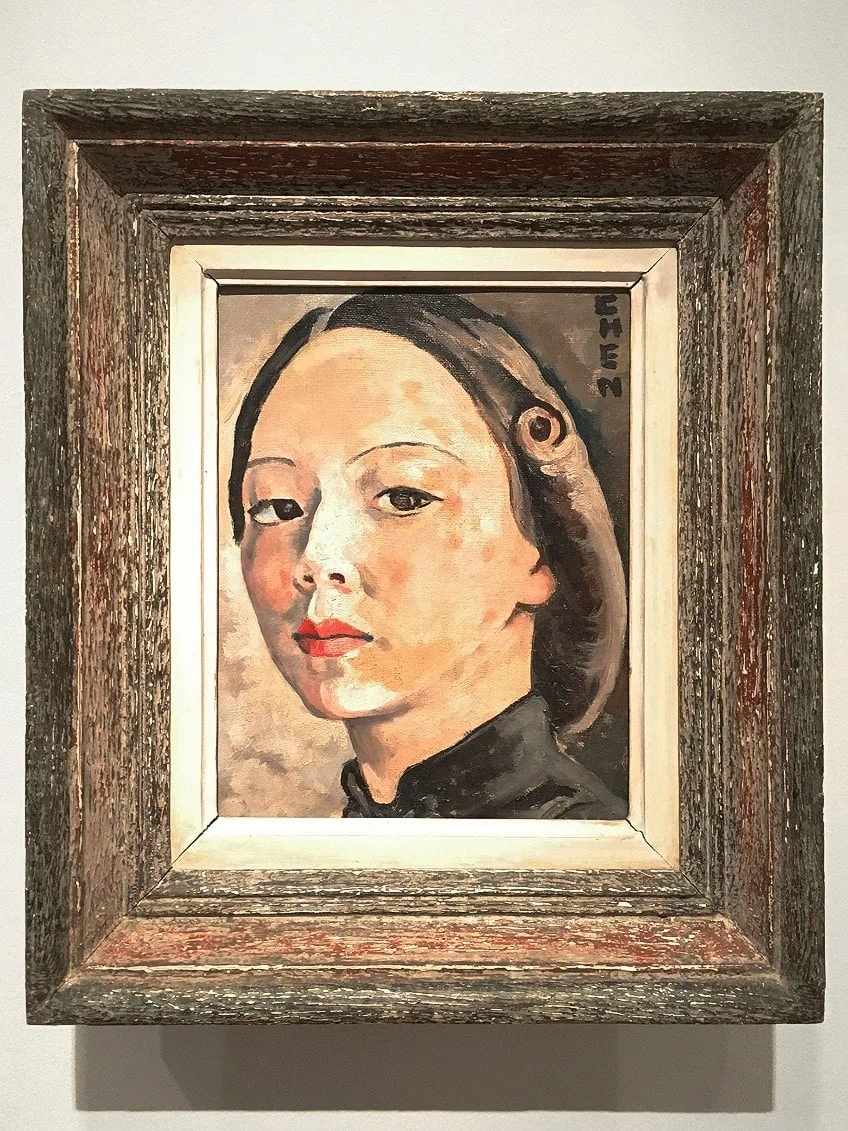
Her likeness was captured articulately and was even admired for its ability to elevate “psychological insights”. Her gaze also displays a “remarkable sense of detachment”, which adds to the psychological use of self-portraiture and the implication of the gaze. Although produced in traditional oil on canvas, the self-portrait is composed, and this can be said to be the self-portrait’s power over the viewer- that it evokes in the viewer a sense of higher power.
Perhaps there is a power play in the gaze. What do you think?
A Set of Six Self Portraits (1967) by Andy Warhol
| Artist | Andy Warhol |
| Date | 1967 |
| Medium | Oil and silkscreen ink on canvas |
| Dimensions (cm) | 114.3 x 171.4 |
| Where It Is Housed | Mutual Art |
Andy Warhol is the king of popular culture references and colorful silk screen-printed portraits. In partnership with numerous celebrities, the famous artist produced portraits of actresses such as Marilyn Monroe. In 1966, the artist produced his own self-portrait in multiple colors, which can now be found at the New York Museum of Modern Art.
What makes his self-portrait so famous, like many iconic artists, is his reputation for being a key proponent of the Pop Art movement of the 1950s.
This marked the beginning of what we call Contemporary art and anyone who has either helped propel an art movement is considered to be of profound impact. Andy Warhol was one such example and is still referenced in many forms today. Warhol’s use of silkscreen printing to produce eye-catching portraits is what earned him his classic art style.
Any colored silkscreen printed image is now almost immediately associated with the work of Warhol.
Famous Contemporary Self-Portraits
When examining self-portraiture, or any art form of your choice, it is useful to incorporate current examples. The inclusion of self-portraiture from the Contemporary period is valuable to frame your understanding of the way that portraiture has developed and adapted in an art context.
Aside from painting, self-portraiture is also practiced through photography, which some may critique as “taking away from the essence of hard work in art and thus easily-produced, low valued self-portraits”.
Although some hold onto this opinion, self-portraiture in Contemporary practice only expands the realm of self-portraiture and how it can be used to touch on subliminal themes associated with the self-portrait. Below we will highlight a few Contemporary artists with self-portraits that capture more than the artists themselves.
Cindy Sherman (1954 – Present)
American artist, Cindy Sherman uses her self-portraits and her body as a medium to display various characters through photography. She takes on the role of both the subject and the artist while imitating various female tropes as depicted in Hollywood.
Sherman draws attention to an interesting aspect of self-portraiture in that the idea of the self-portrait serving as representation for the artist does not have to be set in stone.
Sherman adopts multiple personalities and roles to emphasize the representation of women in popular culture as opposed to the representation of herself as an artist. In her self-portraits, she is never represented as the artist, instead, she is representing a trope.
Sherman states that she “never reveals herself” – an act of concealment that we can liken to the almost cheeky nature of Dalí’s self-portrait.
Sarah Lucas (1962 – Present)
Sarah Lucas is a familiar name to those who take an interest in the Young British Artists (YBA) movement initiated in the early 90s. Sarah Lucas is famous for her self-portraits that engage directly with the viewer in an attempt to draw attention to the female body and the way that the female body is viewed by society (the male gaze).
Through her self-portraits, Lucas purposefully uses innuendo which can be seen in Self Portrait with Fried Eggs 1996 (1999), where she wears two fried eggs on her breasts over her shirt.
The eggs draw reference to the female body as an object of fertility and sexualization, as projected by society and art history. Her critique of art history in particular for often depicting nude women from the lens of objectification is powerful and leaves no room to speculate any other possible meaning. In this self-portrait, the portrait does not represent the individual, rather it represents a collective and highlights an issue not only present in art history but also very prominent in popular culture and patriarchal society.
The self-portrait as a tool for representation beyond the artist and subject is now established.
Hyun Mi Yoo (1964 – Present)
In 2010, artist Hyun Mi Yoo created a self-portrait that combined photography with painting. Yoo’s approach to this unique and unlikely combination of medium with digital media is what makes Yoo’s self-portrait so profound. The artist refers to her process of making, which involves three stages; installation of objects in a space, the application of color, light, and shade as one would employ when painting, and lastly, photographing the object.
Yoo’s innovative process allows her to set up the subject as painting and through photography, capture her self-portrait.
The artist usually works from an image that she envisions and states that her process could even take up to several months to arrive at the desired result. After she photographs the subject, she then adds some final touches using editing software to adjust the saturation or brightness. Yoo skillfully executed her self-portrait that merged together the technical skill of sculpture, painting, and photography while shifting our notion of how a self-portrait can be made in a Contemporary setting.
Yoo’s process also brings to the fore another aspect of self-portraiture in relation to painting as a traditional medium of portraiture in general.
This involves the way that the viewer might admire a painting as opposed to the way we admire photographs since photographs are a digital medium. Digital media is not admired in the same way as that of a Renaissance painting and perhaps what Yoo has illustrated, through her self-portrait process, is an alternative bridge to close the gap between traditional and digital mediums and achieve to some extent the same appreciation of technical skill required for an oil painting.
Self-Portraits Worth Millions
The idea behind painting a self-portrait also involved gaining significant value for your money, given the circumstance if you were lucky enough to gain such a high reputation as an artist. Below are a few self-portraits that have sold in the millions. If you are an aspiring artist, this could be your motivation to start practicing your self-portraiture.
The Standard Bearer (1636) by Rembrandt: $198 Million
| Artist | Rembrandt Van Rijn |
| Date | 1636 |
| Medium | Oil on canvas |
| Dimensions (cm) | 118.8 x 96.8 |
| Where It Is Housed | Private collection |
In February of 2022, this self-portrait by Rembrandt sold for a jaw-dropping $198 million via private sale from the Rijksmuseum. Initially purchased for 175 million euros, the painting’s value is set to increase. This is regarded as one of the most important early works of Rembrandt depicting his eagerness to paint the group portrait for the prestigious Amsterdam militia, which was a highly valued commission for any artist to receive.
A standard bearer was also known as a flag bearer and is the character portrayed by Rembrandt.
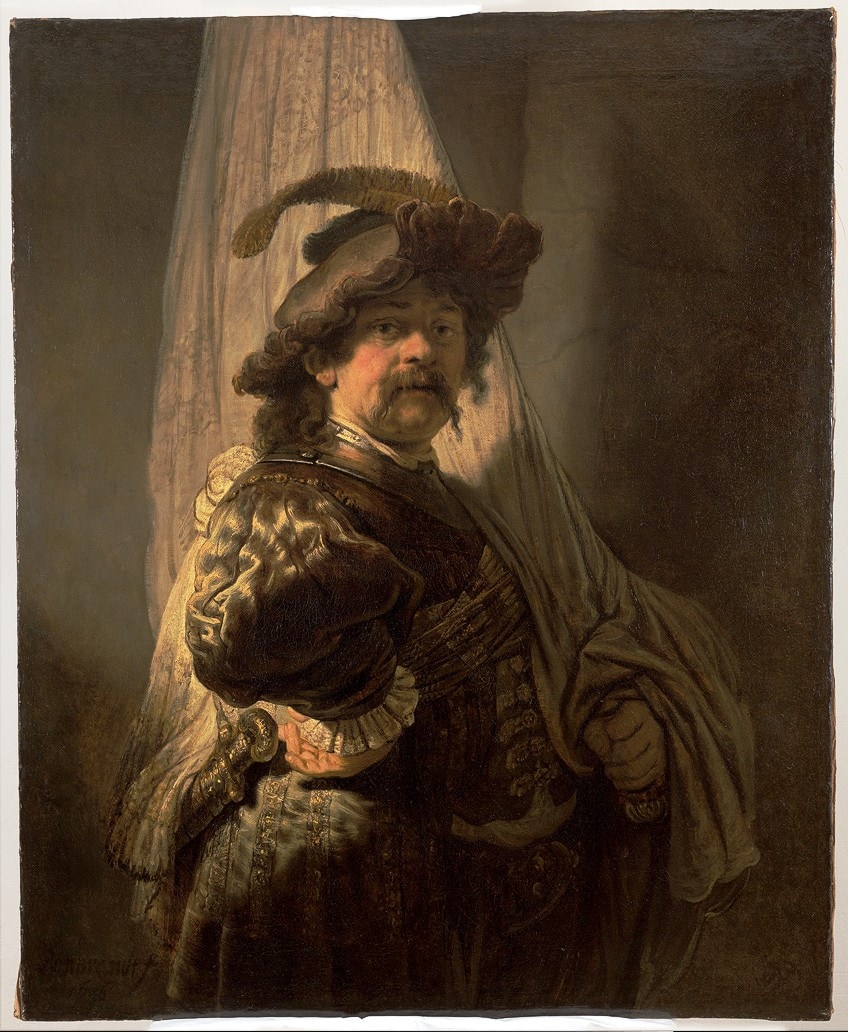
Portrait of an Artist Without His Beard (1889) by Vincent van Gogh: $71.5 Million
| Artist | Vincent van Gogh |
| Date | 1889 |
| Medium | Oil on canvas |
| Dimensions (cm) | 65 x 54 |
| Where It Is Housed | Private collection |
Even more astounding but not surprising, Van Gogh’s Portrait of an Artist without his Beard sold for $71.5 million in 1998. It has been reported that this was possibly his last self-portrait prior to his death and currently stands as the only self-portrait showing the clean-shaven artist.
This can be considered Van Gogh’s final reveal and state of vulnerability to the world a year before he took his own life in 1890.
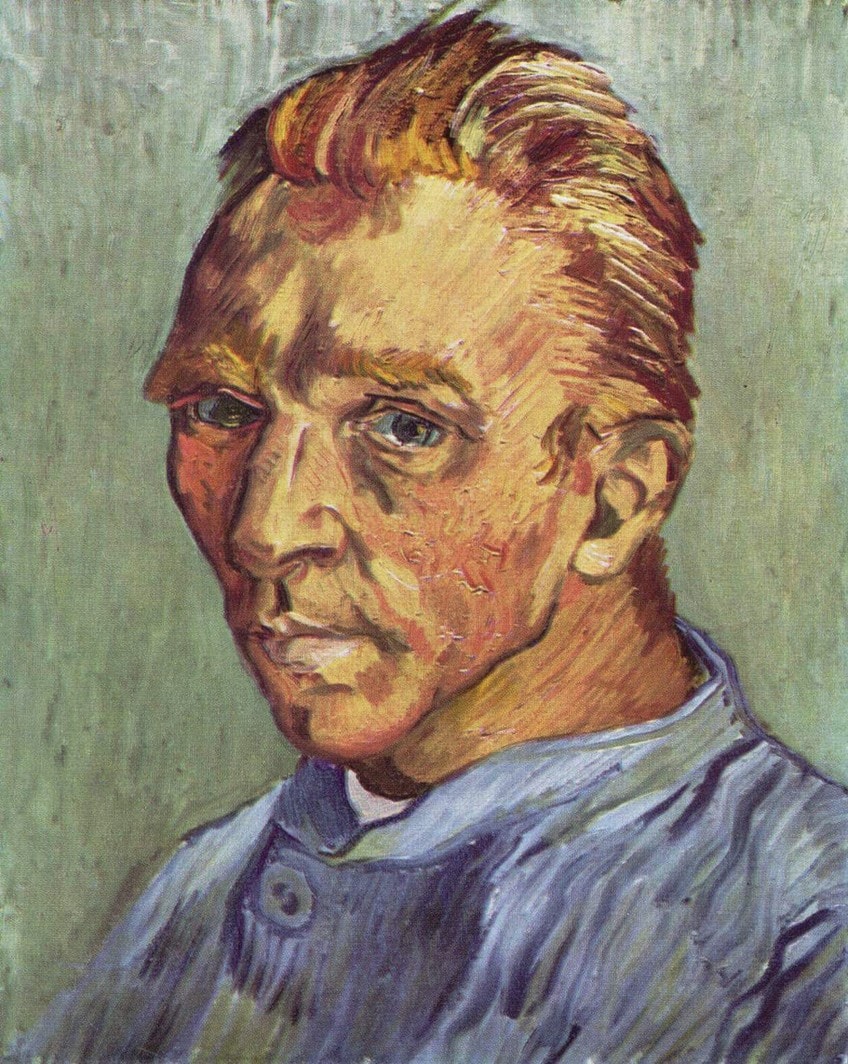
Self Portrait Yo, Picasso (1901) by Pablo Picasso: $47.9 Million
| Artist | Pablo Picasso |
| Date | 1901 |
| Medium | Oil on canvas |
| Dimensions (cm) | 73.5 x 60.5 |
| Where It Is Housed | Private collection |
Sold for a whopping $47.9 million in 1989, the self-portrait of Pablo Picasso shows the famous artist at the young age of 19 years old, gazing at the viewer with much pride and youth. This is considered to be one of Picasso’s clearest depictions of himself.
Later, he adopted a more abstract version of self-portraiture.
Diego y yo (1949) by Frida Kahlo: $34.9 Million
| Artist | Frida Kahlo |
| Date | 1949 |
| Medium | Oil on masonite |
| Dimensions (cm) | 30 x 22.4 |
| Where It Is Housed | Private collection |
The famous Mexican self-portrait painter, Frida Kahlo also falls on the list of self-portraits that sold for millions. At approximately $34.9 million, Kahlo’s Diego y yo (Diego and I) was sold via Sotheby’s in 2021 and established the painting as one of the most expensive Latin American paintings. In the self-portrait, Kahlo is seen shedding tears while staring unapologetically at the viewer.
Her third eye is represented by her lover, Diego Rivera, who is said to be the source of her emotional turbulence.
Self-Portrait (1986) by Andy Warhol: $27.5 Million
| Artist | Andy Warhol |
| Date | 1986 |
| Medium | Acrylic paint and screen print on canvas |
| Dimensions (cm) | 203.2 x 203.2 |
| Where It Is Housed | Tate collection |
You could not have missed this self-portrait of Andy Warhol if you have ever looked up his work. Sold for $27.5 million, this red-and-black self-portrait of Warhol was made close to the time of his death, and as an established and celebrated artist of many merits, it is not surprising that one of Warhol’s last self-portraits was worth millions.
A classic impression of Warhol is seen through his spiky hair, beady eyes, and direct gaze.
The self-portrait is clearly an important rite of passage for most great masters in art history. You can find unique and inventive ways of using self-portraiture as a tool in your Contemporary artistic practice by referring to the many interesting interpretations of the most famous self-portraits and self-portrait artists. What does your self-portrait mean? What are you representing beyond the superficial lens of technique? In what other ways can you create a self-portrait? These are important questions to consider when journeying into the practice of self-portraiture.
Take a look at our self-portraits webstory here!
Frequently Asked Questions
Who Is the Most Famous Self-Portraiture Artist?
The most famous self-portraiture artist is said to be Rembrandt who experimented with portraiture to discover new ways of incorporating light and facial expressions in painting.
What Is the Most Famous Self-Portrait?
The most famous self-portrait ranges from Rembrandt’s The Desperate Man (1845) to Leonardo da Vinci’s Portrait of a Man in Red Chalk (1512). Some might consider Vincent van Gogh’s Self-Portrait (1889) the most famous due to the artist’s long-standing legacy.
What Is the Most Expensive Self-Portrait?
The Standard Bearer (1636) by Rembrandt is considered the most expensive self-portrait ever sold. The painting was sold at a private sale for $198 million in February of 2022.
Liam Davis is an experienced art historian with demonstrated experience in the industry. After graduating from the Academy of Art History with a bachelor’s degree, Liam worked for many years as a copywriter for various art magazines and online art galleries. He also worked as an art curator for an art gallery in Illinois before working now as editor-in-chief for artfilemagazine.com. Liam’s passion is, aside from sculptures from the Roman and Greek periods, cave paintings, and neolithic art.
Learn more about Liam Davis and about us.
Cite this Article
Liam, Davis, “Famous Self-Portraits – Discover Famous Portrait Paintings in Art.” artfilemagazine – Your Online Art Source. August 11, 2022. URL: https://artfilemagazine.com/famous-self-portraits/
Davis, L. (2022, 11 August). Famous Self-Portraits – Discover Famous Portrait Paintings in Art. artfilemagazine – Your Online Art Source. https://artfilemagazine.com/famous-self-portraits/
Davis, Liam. “Famous Self-Portraits – Discover Famous Portrait Paintings in Art.” artfilemagazine – Your Online Art Source, August 11, 2022. https://artfilemagazine.com/famous-self-portraits/.


